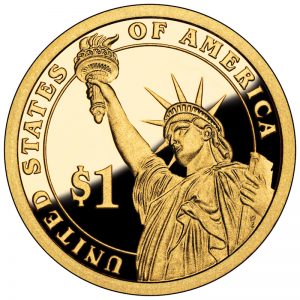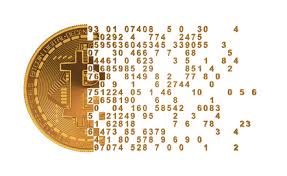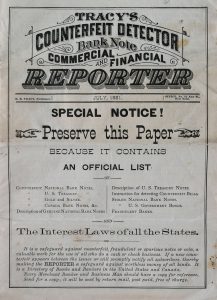Nothing wrong with the Mint’s Manufacturing Process
The U.S. Mint took to social media to let everyone know that they struck 24 million coins since January 2020.
After COVID-19 shut down the world, the supply chain was interrupted and not moving as expected. As businesses began to open, regulators ordered the U.S. Mint to increase circulating coin production so the Federal Reserve could push coins through the economy.
In 2020, the U.S. Mint struck 14.774 billion coins, 23.7-percent more than they struck in 2019. The announcement means that in the first ten months of 2021, the U.S. Mint struck 10 billion additional coins. It appears that the U.S. Mint will match the production rate of 2020.
Although collectors have a lot to say about how they have been treated, the U.S. Mint exceeds its primary mission as the nation’s coin manufacturer.
In for 14 years of Dollars
 On July 20, 2018, the president signed the American Innovation $1 Coin Act to become Public Law No. 115-197.
On July 20, 2018, the president signed the American Innovation $1 Coin Act to become Public Law No. 115-197.
Beginning in 2019, there will be four dollar coins issued where the obverse will be “a likeness of the Statue of Liberty extending to the rim of the coin and large enough to provide a dramatic representation of Liberty.” The reverse will be emblematic of an innovation, innovator, or a group of innovators significant to that state or territory. The dollar coins will use the same Manganese-Brass composition as all dollar coins struck since 2000 with the edge lettering consisting of the year, mintmark, and the national motto E PLURIBUS UNUM.
The American Innovation $1 Coin will be issued in the same order as the 50 State Quarter Program, the order the states entered the union, followed by the District of Columbia and U.S. Territories.
The order will be as follows:
- Delaware
- Pennsylvania
- New Jersey
- Georgia
- Connecticut
- Massachusetts
- Maryland
- South Carolina
- New Hampshire
- Virginia
- New York
- North Carolina
- Rhode Island
- Vermont
- Kentucky
- Tennessee
- Ohio
- Louisiana
- Indiana
- Mississippi
- Illinois
- Alabama
- Maine
- Missouri
- Arkansas
- Michigan
- Florida
- Texas
- Iowa
- Wisconsin
- California
- Minnesota
- Oregon
- Kansas
- West Virginia
- Nevada
- Nebraska
- Colorado
- North Dakota
- South Dakota
- Montana
- Washington
- Idaho
- Wyoming
- Utah
- Oklahoma
- New Mexico
- Arizona
- Alaska
- Hawaii
- District of Columbia
- The Commonwealth of Puerto Rico
- Guam
- American Samoa
- The U.S. Virgin Islands
- The Northern Mariana Islands
Happy collecting!
Weekly World Numismatic News for July 22, 2018

Winning design for the obverse of the 2014 Baseball Hall of Fame commemorative. (Image courtesy of the U.S. Mint)
On April 15, 1947, Jackie Robinson debuted for the National League’s Brooklyn Dodgers and on July 5, 1947, Larry Doby integrated the American League with the Cleveland Indians.
This past week, Senators Time Scott (R-SC) and Cory Booker (D-NJ) introduced the bill (S. 3239) in the Senate on behalf of the National Baseball Hall of Fame. Next week, Representatives Roger Williams (R-TX) and Cedric Richmond (D-LA) will likely introduce a similar bill in the House of Representatives.
S. 3239: A bill to require the Secretary of the Treasury to mint commemorative coins in recognition of the 75th anniversary of the integration of baseball.
To keep with the theme of making something different, such as the 2014 coins being curved, the bill calls of the new commemorative to be square and the common reverse to resemble a baseball diamond. This should be somewhat easy to accomplish since a real baseball diamond is nothing more than a square tilting on its corner.
For the obverse of the coin, the U.S. Mint is supposed to hold an open competition for artists to provide their suggestion for a design “emblematic of the integration of the game of baseball”
There will be the usual three-coin program consisting of no more than 50,000 $5 gold coins, 500,000 silver dollars, and 750,000 clad half-dollars. Surcharges received from the sale of the coins will benefit the National Baseball Hall of Fame and Museum and the Jackie Robinson Foundation.
And now the news…
The oldest coins in the find were minted during the reign of Hadrian (117-138 AD); the youngest come from the last years of the reign of Septimius Severus (beginning of the 3rd century AD). "All coins were found very close to each other in the Roman fort Apsaros" – told PAP Dr.  → Read more at scienceinpoland.pap.pl
→ Read more at scienceinpoland.pap.pl
In the town of Clayton, no good deed goes unnoticed.  → Read more at wral.com
→ Read more at wral.com
ONE of the “finest known” examples of Australia’s earliest coin is expected to fetch more than $300,000 when it goes up for auction in Sydney next week.  → Read more at news.com.au
→ Read more at news.com.au
A wreck involving an armored car left coins strewn across Interstate 40 in Tennessee, police said.  → Read more at tennessean.com
→ Read more at tennessean.com
The U.S. could issue commemorative coins on the 75th anniversary of Robinson breaking baseball's color barrier with the Dodgers.  → Read more at latimes.com
→ Read more at latimes.com
SCRANTON — When churchgoers drop their loose change into collection bins at St. Ann’s Monastery and Basilica, whether during the novena or on regular worship days, items other than U.S. currency sometimes gets mixed in.  → Read more at thetimes-tribune.com
→ Read more at thetimes-tribune.com
Police in Berlin have seized 77 apartments, homes and pieces of land belonging to the Remmo family as they charged 16 members with money laundering over the gold coin heist.  → Read more at dailymail.co.uk
→ Read more at dailymail.co.uk
Friday demonstrations of the Nevada State Museum’s historic Coin Press No. 1 have proven so popular this summer that museum officials are extending the program through Labor Day weekend  → Read more at nevadaappeal.com
→ Read more at nevadaappeal.com
The United States is not going cashless… oh, look at that butterfly!
 With the discovery of every new technology, there are the inevitable predictions that it will make the old ways obsolete. Although the automobile reduced the reliance on horses, the basics of the internal combustion engine have not changed in over 100 years. Take away the electronics around the engine, the technology increasing the air intake, and cleaning up the exhaust, and you still have an engine block with pistons that go up and down in the classic suck-bang-blow rhythm that was used in the Model T.
With the discovery of every new technology, there are the inevitable predictions that it will make the old ways obsolete. Although the automobile reduced the reliance on horses, the basics of the internal combustion engine have not changed in over 100 years. Take away the electronics around the engine, the technology increasing the air intake, and cleaning up the exhaust, and you still have an engine block with pistons that go up and down in the classic suck-bang-blow rhythm that was used in the Model T.
The latest technology that is being touted as being the doom for physical money, which can also be the end of numismatics, is cryptocurrency.
There are two aspects of cryptocurrency that its fans say are its biggest strength. First, it is not bound by the traditional means of generating wealth. You can think of cryptocurrency as digital gold. It is mined using computers and a lot of complex arithmetic to generate one unit of the currency, sometimes referred to as a bitcoin. Like physical gold, there is some work required to mine for these bitcoins. It lies in the ability to create a computing environment capable of performing these intensive mathematical operations. You may not be panning for gold but you might spend as much on equipment and travel.

For a good basic description of the blockchain technology, see the article on Medium.
However, both its strengths are its greatest weaknesses.
While the value of money is regulated by their respective government there are no blockchain regulations. There is no regulation on the number of generated bitcoins but is arbitrarily set by the creator of the cryptocurrency. There is no guarantee of value as a state-sponsored currency. Bitcoin investors are betting on the value of electronics and math, something many of these investors does not fully understand.
The blockchain also provides its own problems. In order to use the cryptocurrency, you have to have your own copy of the ledger and be able to pass the information to the party you want to pay. Think about having a checkbook with everyone’s information. You cannot read the information because it is encrypted but you have to have a copy. Then you need to pay someone. You hand over the checkbook in order to complete the transaction.
Think about the amount of data that would be if the blockchain supported 1,000 people. What would it take to support 1 million people? What if the government decided that everyone would do their business in bitcoin and everyone would have to have a way to deal with the blockchain in order to facilitate payments. How cumbersome will that ledger be if all 325.7 million people in the United States had to carry that around?
Each blockchain is its own entity. While you can trade in bitcoins on the same blockchain, you may have to participate in more than one blockchain if you want to accept bitcoins from several different people. It is like different currencies today. I can go anywhere in the United States and use dollars. But if I wanted to go to Canada, I can either arrange an exchange or find someone who will trade.
Cryptocurrency that has to operate across different blockchains is just like going to Europe and having to change your dollars for euros.

1881 Tracy’s Counterfeit Detector and Bank Note Reporter (Image courtesy of the Numismatic Bibliomania Society)
Eventually, this will lead to a cryptocurrency version of a Bank Note Reporter and Counterfeit Detector as was popular during the broken banknote period. Then it will be followed by a Cryptocurrency Act similar to the Currency Act that ended the broken banknote period proving George Santayana right as we repeat history.
Cryptocurrency is the darling of the technology industry and those in the financial industry that trade in high-risk investments. Even traditional financial services companies are spending a limited amount of risk capital on cryptocurrency investments. However, by all statistics, the number of consumers using cryptocurrency for transactions is less than 1-percent.
If Not Cryptocurrency The What About Credit Cards
Credit and debit cards remain the primary target that proponents of a cashless society use to promote their agenda. However, when faced with the realities of life in the United States, there are three statistics that work against their arguments:

- The Bureau of Engraving and Printing, the printer of United States currency, reports a year-over-year increase in production of just over 4-percent.
- The U.S. Mint, the manufacturer of United States coinage, is reporting a year-over-year increase of 6-percent striking circulating coinage.
- According to CreditCards.com, “In 2013, 20 percent of whites did not have access to a credit card compared with 47 percent of African-Americans and 30 percent of Latinos.”
The primary customer for the Bureau of Engraving and Printing and U.S. Mint is the Federal Reserve. If the Federal Reserve needs the money for its operations, they buy it from these government bureaus. The Federal Reserve only orders what it needs. If it does not need the money, then it is not produced.
Aside from the over 50-percent of the population without access to credit cards, there continues to be a demand for physical currency. Whether the currency is used in a vending machine or to buy other items, cash is still king and shows no sign of slowing.
While there continues to be a demand for the products from the U.S. Mint and Bureau of Engraving and Printing, these bureaus will continue to produce coins and currency giving us more opportunity to collect their products.
A LOOK BACK: Of Persians and Hoboes
Local coin clubs are a place you can regularly go to talk about coins and numismatics with like-minded collectors. If you have not attended a meeting you should find time to go. You might find that there is a learning experience that can inspire you in your collecting endeavors. One of the reasons I try to ensure I make it to the monthly meeting of my local coin club is because I seem to leave every meeting with an appreciation for something different about the hobby.

1353 (1974) Iran 20 Rials (KM #1181)
Image courtesy of Numismatic Guarantee Corporation
Another highlight of the meeting was the presentation by Ron Brais about Hobo Nickels. While I have heard about Hobo Nickels, all I knew about them was what I learned in passing. In listening to Ron talk, I learned that the original Hobo Nickels were created between 1913 and 1935 using only Buffalo Nickels because the design had large figures on both sides that could be used as the basis of the design. The copper-nickel coins are also softer than others allowing them to be more easily carved. These elements allowed the carver to make just about any design and usually did. Designs were as varied as the artists who carved them. Hoboes would use the carved nickels to trade for food, shelter, or other favors during their travels.
The most famous Hobo Nickel artist was George Washington “Bo” Hughes. Bo ran away from home at a young age and was befriended by a hobo identified as Bert. After a train yard scuffle, Bert took Bo under his wings, protected him from the tramps and bums and taught Bo how to carve realistic images into the Buffalo nickel. For many years, Bo would ride the rails and carve nickels living the life of the hobo as he looked for work to survive. Bo’s work on Hobo Nickels allowed him to eventually get a job as a craftsman. It lasted until 1957 when he cut his left hand while carving a nickel. At that time Hobo Nickels were no longer popular and Bo just faded away. He died in 1982.
The life and history of George Washington “Bo” Hughes has been immortalized in the book Hobo Nickels by Delma K. Romines (out of print).

A self-portrait carved by Bo Hughes. Click on the image to read more about Hughes
Image courtesy of the Original Hobo Nickel Society
Today, the Original Hobo Nickel Society has a number of artist members that are carving images into Buffalo and Jefferson nickels to keep the art alive. Some of the designs are ingenious and beautiful while others are copies of carving on older coins. Modern nickels are made using modern tools that allow the carving to look much cleaner than their older examples. The old methods and tools were not able to make clean lines but it gave them a character that cannot be matched. To see the work of modern Hobo Nickel artists, follow @Hobo_Nickel_Soc on Twitter and try to resist not buying them!
The example of a Bo Hughes carved nickel displayed as part of the presentation beautiful in its design and execution. The care and craftsmanship that went into carving that coin was evident. Hobo Nickels can sell from $200-$1500 depending on condition and the artist. Coins by Bo Hughes are worth more than others.
Weekly World Numismatic Newsletter for July 15, 2018

Image of some of the casts donated to the ANA Money Museum by Genna Goodacre
(Image courtesy of the Colorado Springs Independent)
Glenna Goodacre, the designer of the Sacagawea Dollar and a graduate of Colorado College in Colorado Springs, donated several items relating to the design of the dollar coin to the American Numismatic Association Money Museum.
Donations include several plaster and bronze casts of the coin that were used to test the design and show the relief of the coin. There is also a plaster cast with an alternate version without her baby, Jean Baptiste Charbonneau, on her back.
News of the donation was published on Friday, July 13, 2018. According to the article, ANA communications coordinator Amanda Miller said that there were no immediate plans to display these items.
Following a significant donation, the ANA will issue a press release. When they do, it would be nice to read that some of these items would be on display at the World’s Fair of Money next month in Philadelphia.
And now the news…
An uninhabited island off the coast of Arnhem Land may be the discovery place of a medieval African coin, which, if confirmed, would be among the oldest foreign artefacts ever found in Australia.  → Read more at abc.net.au
→ Read more at abc.net.au
The Money Museum, the local, official museum of the American Numismatic Association, recently announced an exciting new donation to its collection. Sculptor and Colorado College graduate Glenna Goodacre has given the museum a selection of items related to the Sacagawea dollar, for which she designed the obverse (the face side).  → Read more at csindy.com
→ Read more at csindy.com
The tenacity of amateur archaeologists and historians searching on a remote island off the coast of the Northern Territories in Australia seems to have finally paid off. The team has found a small coin that apparently comes from a medieval African city.  → Read more at ancient-origins.net
→ Read more at ancient-origins.net
The banknotes highlight Nelson Mandela’s historical journey, from the rolling hills of the Eastern Cape to the Union Buildings. More than 400 million banknotes and coins bearing the face of South Africa’s first president in the era of democracy, the late Nelson Mandela, are being released to commemorate his centenary.  → Read more at citizen.co.za
→ Read more at citizen.co.za
A Virginia Beach coin dealer recently spent $2.64 million on a rare coin from 1834. He and his business partner are collecting coins from 1792 to present day.  → Read more at pilotonline.com
→ Read more at pilotonline.com
The Bank of Jamaica (BOJ) has named GraceKennedy Payment Services Ltd (GKPS) as an official coin collection agent in the national coin redemption drive.According to the BOJ, following efforts to identify agents to widen its coin redemption drive, it…  → Read more at jamaica-gleaner.com
→ Read more at jamaica-gleaner.com
